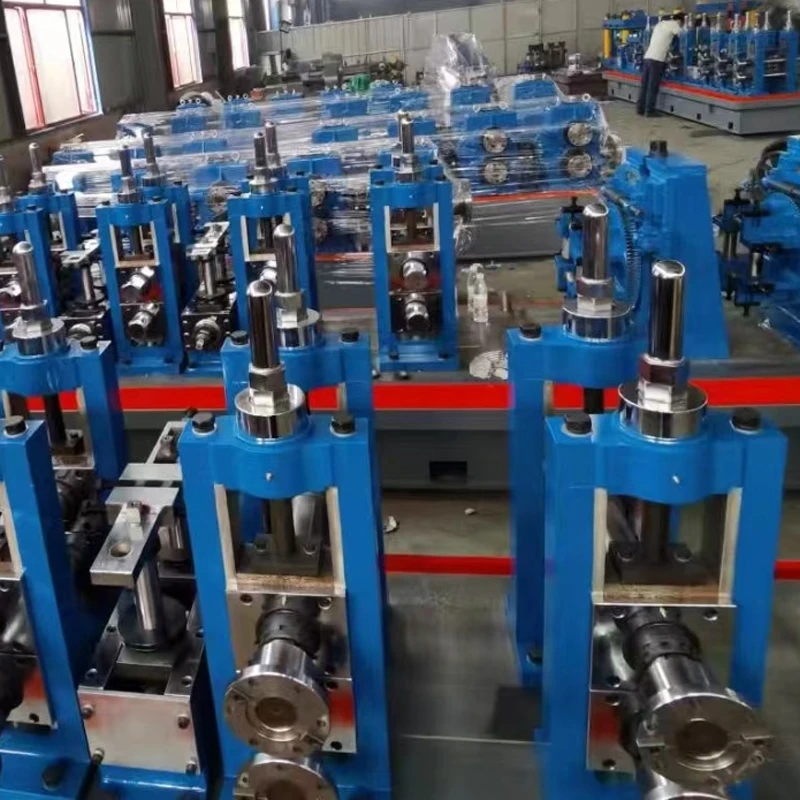Understanding the Benefits and Applications of Compression Molding Press in Manufacturing
Understanding Compression Molding Press in Manufacturing
Compression molding is a widely utilized manufacturing process, particularly for producing intricate and high-volume parts from thermosetting plastics and elastomers. At the heart of this process lies the compression molding press, a specialized machine designed to apply heat and pressure to raw material placed in a mold, resulting in a transformed finished product. This article delves into the functionalities, advantages, and applications of compression molding presses in the manufacturing landscape.
What is Compression Molding?
Compression molding involves placing a pre-measured amount of material, usually in the form of a pellet or a sheet, in an open mold cavity. The mold is then closed, and heat and pressure are applied. This causes the material to flow and fill the mold, solidifying into the desired shape as it cools. The process is particularly effective for producing parts with complex geometries and is commonly used for items like automotive components, electrical insulators, and various consumer products.
The Role of Compression Molding Press
A compression molding press is designed to provide both the heat and pressure necessary for the molding process. These machines come in various sizes and capacities, tailored to meet the specific requirements of different production scales. The key components of a compression molding press include
1. Heating Plates These are essential for maintaining the correct temperature to ensure the material cures effectively. 2. Cylinders Hydraulic cylinders are used to apply controlled pressure, which is crucial for achieving the desired part density and eliminating air pockets. 3. Controls and Automation Modern presses feature advanced control systems that allow operators to set and monitor the temperature, pressure, and timing parameters, improving precision and repeatability.
compression molding press

Advantages of Compression Molding Press
1. Cost-Effective for High Volumes Compression molding is particularly advantageous for mass production since the initial setup costs can be offset by the low per-unit cost of subsequent parts. 2. Material Efficiency This process minimizes waste, as excess material is often recyclable or used in secondary applications. 3. Versatility Compression molding presses can accommodate a wide range of materials, including thermosetting plastics, elastomers, and composite materials, making it a versatile choice for manufacturers. 4. Quality of Finish The pressure applied during molding ensures a high-quality finish with minimal defects, making it suitable for applications demanding precision.
Applications of Compression Molding Press
Compression molding presses have extensive applications across various industries
- Automotive Used to manufacture dashboard components, bumpers, and insulation parts, ensuring durability and lightweight designs. - Electronics Creates insulators and housings that require specific thermal and electrical properties. - Consumer Goods Produces everything from kitchenware to sports equipment, meeting the high demands for functionality and aesthetics. - Medical Devices Used in creating components that require strict compliance with health standards and precision.
Conclusion
In summary, the compression molding press is a pivotal element in the manufacturing process of various industries. Its ability to produce high-quality, complex parts efficiently makes it a favorite among manufacturers. As technology continues to evolve, the enhancements in automation and control systems are set to further improve the capabilities and efficiency of compression molding presses, ensuring their prominence in the future of manufacturing. Whether for automotive, electronics, or consumer products, the versatility and reliability of compression molding presses will continue to play an integral role in meeting the demands of modern production.
-
High Frequency Straight Seam Welded Pipe Production Line|BzZhou Xinghua|Precision Welding&EfficiencyNewsJul.30,2025
-
High Frequency Straight Seam Welded Pipe Production Line - BzZhou Xinghua|Precision Engineering&EfficiencyNewsJul.30,2025
-
High-Frequency Straight Seam Welded Pipe Production Line-BzZhou Xinghua Machinery Equipment Manufacturing Co., LTD.NewsJul.30,2025
-
High-Frequency Straight Seam Welded Pipe Production Line-BzZhou Xinghua Machinery Equipment Manufacturing Co., LTD.|Precision Manufacturing, High EfficiencyNewsJul.30,2025
-
High Frequency Straight Seam Welded Pipe Production Line-BzZhou Xinghua Machinery Equipment Manufacturing Co., LTD.|Precision Steel Pipe Manufacturing&Industrial EfficiencyNewsJul.29,2025
-
High-Frequency Straight Seam Welded Pipe Production Line-BzZhou Xinghua Machinery Equipment Manufacturing Co., LTD.|Precision Steel Pipe Manufacturing&Industrial EfficiencyNewsJul.29,2025


